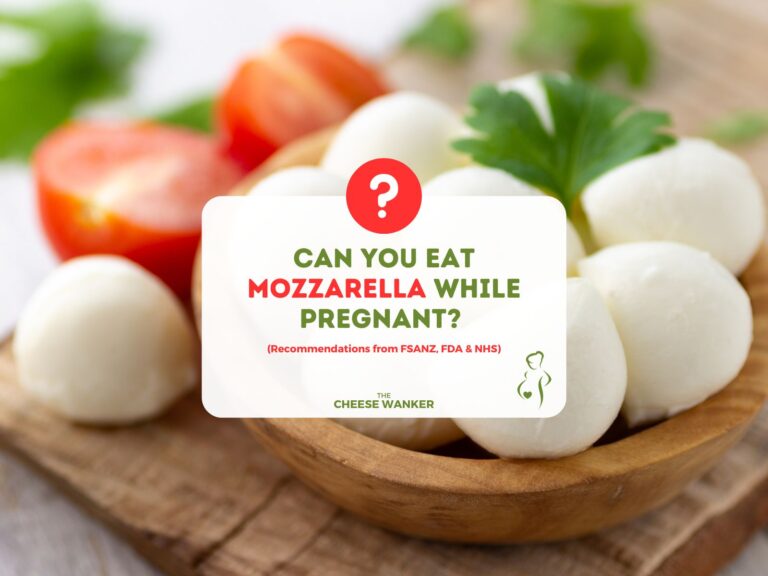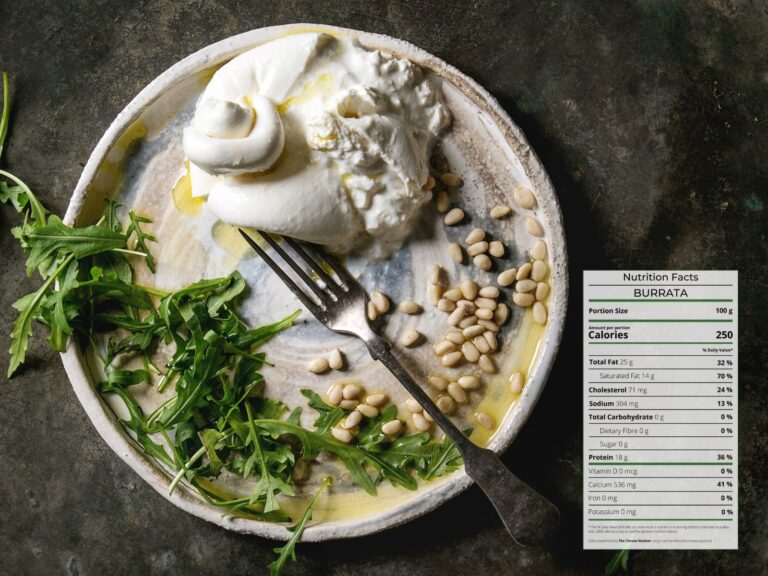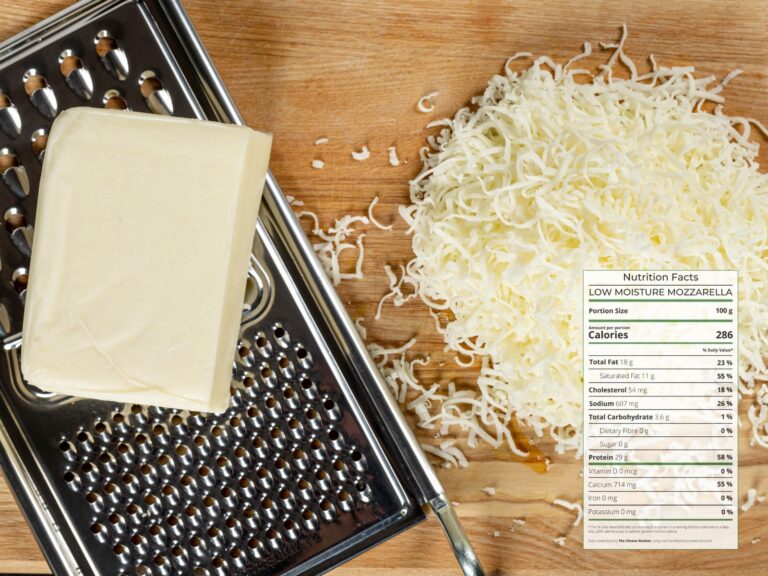Mozzarella is America’s most popular cheese and there’s a good reason for this. Cheese pulls don’t get much better than when you’re using Mozzarella. But do you know why Mozzarella is so stretchy when melted?
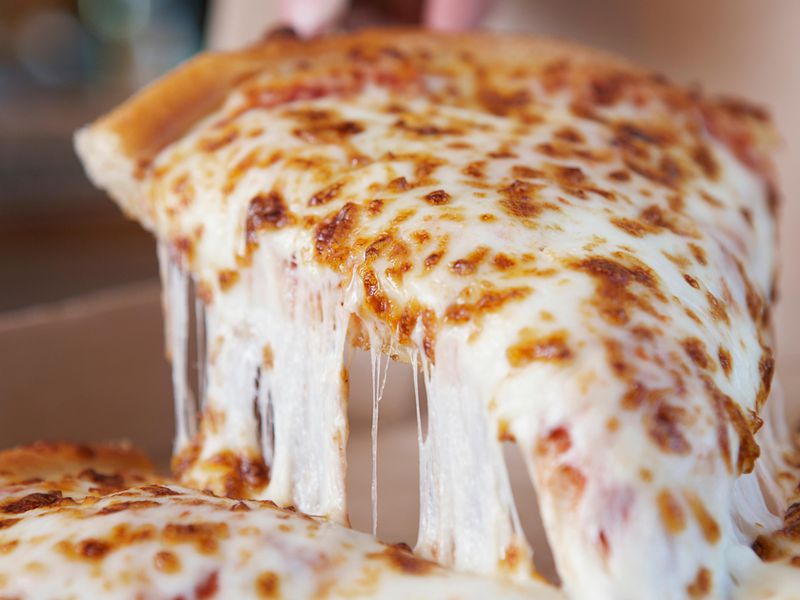
SEE ALSO: The difference between Mozzarella & Fior di Latte →
The chemistry of Mozzarella
Cheese pulls don’t get much more spectacular than with this Italian cheese. But why is Mozzarella so stretchy when hot?
Let’s take a quick dip into the chemistry of milk for a moment. On a molecular level, milk is made up of fat globules, dissolved sugars (lactose), vitamins, minerals and, most importantly, a type of protein called casein.
From milk to cheese
To begin with, milk can be turned into cheese by 2 different methods, either using acid or rennet.
Acidification changes the electric charge of the casein bundles. As a result, they all collapse, squeeze out liquid and form clusters. This leads to a curd that’s creamy but not elastic. Cheeses made this way include fresh cheeses like Queso Fresco, Chèvre and Paneer.
On the other hand, rennet has a much more nuanced effect on cheese. The bundles of casein protein stop floating around in liquid and form a gelled network trapping fats and liquids within, rather than squeezing them out.
Overall, this forms the type of curd that is responsible for most of the cheeses you love, from Mozzarella to Gruyère. You can read more about rennet by clicking here.
The art of Pasta Filata
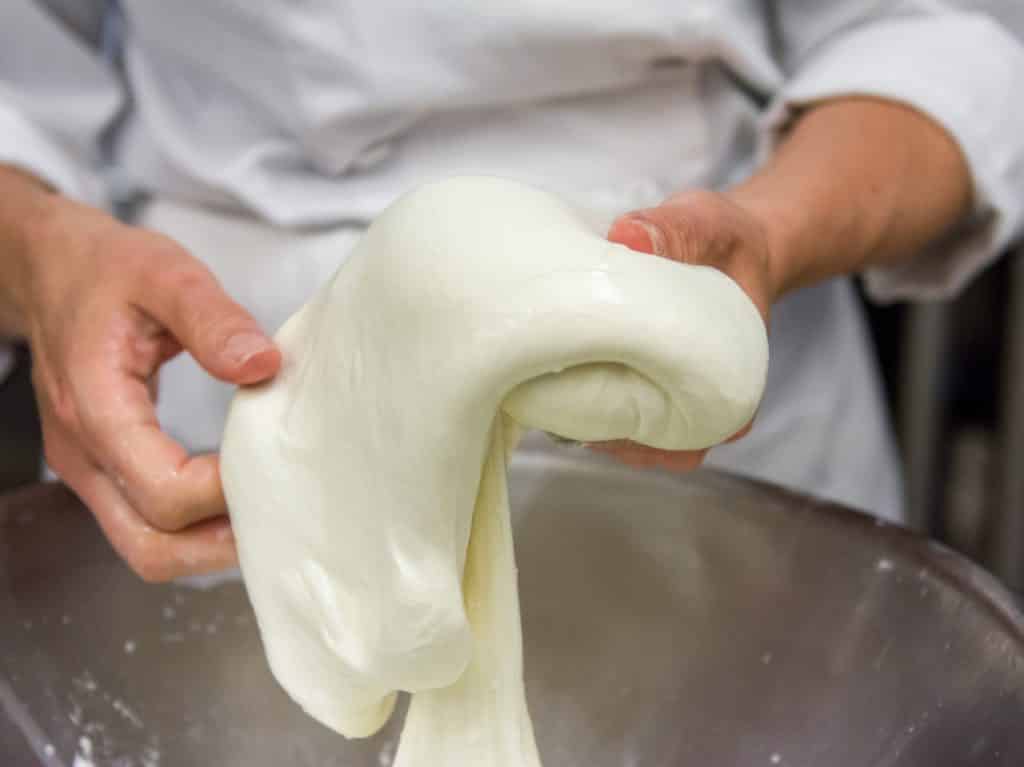
So, what does all of this have to do with the “meltability” and “stretchability” of Mozzarella?
A crucial step in the making of mozzarella involved putting the rennet-set curds into hot salty water. This uncoils the gelled network of protein and turns them into long strands. A skilled cheesemaker then repeatedly compresses and stretches the curd using a process called pasta filata.
This is the reason why cheeses made this way are called stretched curds. Moreover, this forces the strands of proteins to line up, thus creating the famous stringy consistency.
What heat does to Mozzarella
So, that explains the texture of fresh mozzarella. But how does it turn from that to the stretchy, gooey “mess” we love on our pizzas?
Actually, heat melts the fat globules and breaks down the bonds holding together the casein proteins. As a result, the entire structure of the cheese starts to sag and stretch into an almost lava-like puddle.
But watch out. Too much heat can also be a bad thing. I’m sure you’ve all had pizza or lasagne with greasy, thick slabs of cheese on top. This happens when the cheese has been heated for too long. The excessive heat denatures the protein, evaporates the water and leaves the fat globules in a state of chaos.
What happens to other cheeses when melted?
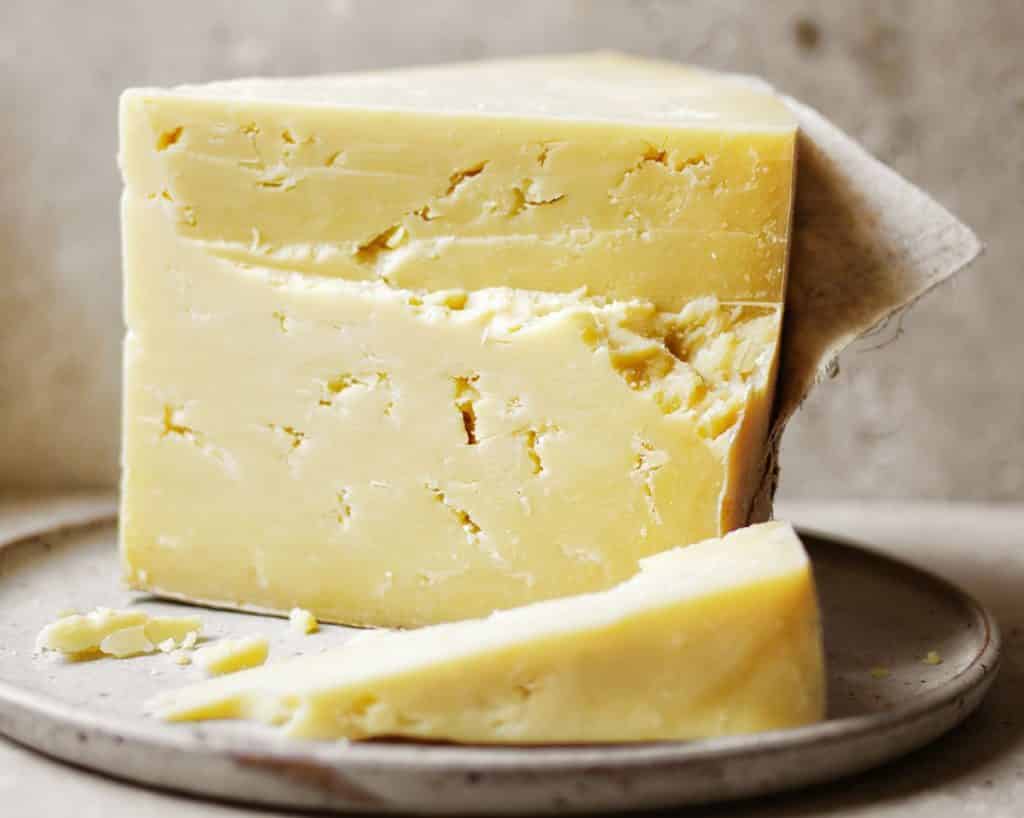
In the case of Mozzarella, the cheese is still young and has a high moisture content. That perfect balance of water and fat means that the cheese has incredible pull that does not break easily.
More mature cheeses like Parmigiano Reggiano and Pecorino Romano have a very low moisture content and, therefore, tend to clump together when heated.
Wax coated hard cheeses like Gouda and Cheddar still maintain a decent level of moisture but do not melt with a stretch because, over the maturation period, their proteins have a much tighter knit structure.
What’s your favourite recipe using Mozzarella?
So, to wrap it up, the key to Mozzarella’s crazy pull is the type of curd, the lining of the protein strands and its fat and moisture content. Love to cook with Mozzarella? Leave me a comment below with your favourite recipe.
